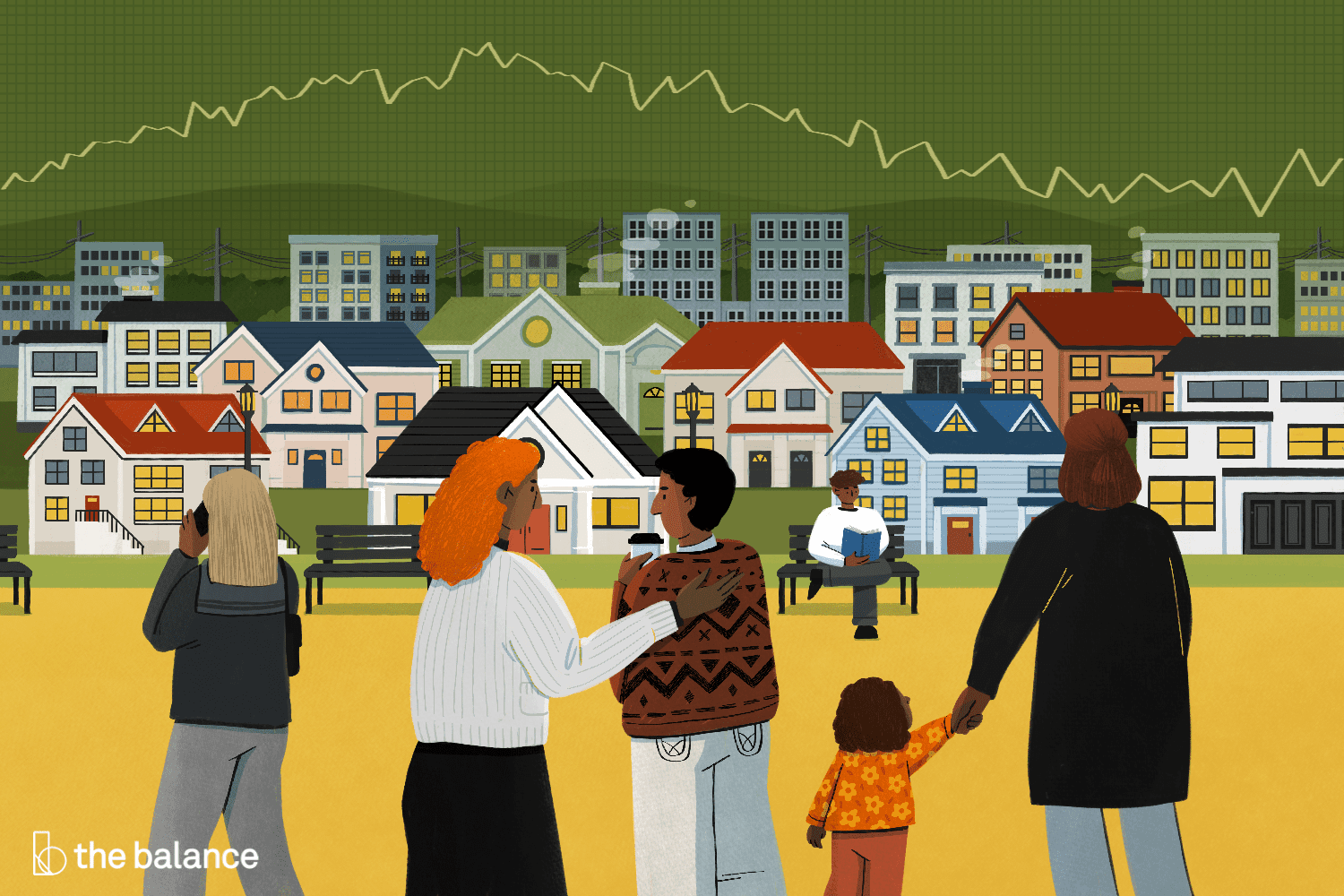Racism in the U.S. housing market has contributed to a persistent homeownership gap between Black and White households, through discriminatory policies of redlining, housing segregation, and devaluation of Black assets.
The homeownership gap between Black and White households is one of the driving forces behind the racial wealth gap, because owning a home is still a top wealth driver in the U.S. In the fourth quarter of 2021, the Black homeownership rate was 43%, compared to 74% for White Americans, according to the latest U.S. Census Bureau report. For comparison, the national homeownership rate was about 65% at that same time.1
The homeownership gap between Black and White households has grown over time, too. In 1960, the gap was 27 points as 38% of Black households owned homes compared to 65% of White households.2 More than 60 years later, the gap is 31 points.
“We are essentially where we were in the 1960s when the Fair Housing Act was passed, supposedly to eliminate the discrimination and barriers that impact homebuying," said Andre M. Perry, senior fellow at Brookings Metro and author of “Know Your Price: Valuing Black Lives and Property in America’s Black Cities," during an Instagram Live conversation with The Balance on Feb. 2, 2022. "The policies of the past and present have deliberately prohibited Black people from generating enough wealth to purchase homes."
Note
This article is the first in a series of feature articles The Balance is publishing for first-time homebuyers throughout Black History Month (February). While there there are a lot resources already available about buying a home, the reality of the Black homebuying experience in the last century needs to be discussed. Black homebuyers have faced discrimination issues that White homebuyers have not, including redlining, segregation, and property devaluation.
When economists discuss strategies and solutions to build Black wealth, tackling the homeownership gap is a major one, which makes it imperative that first-time Black homebuyers in particular have support.
Before we guide all readers through the homebuying process, let’s take a deeper dive into the history of Black homeownership and the racism that still exists in the U.S. housing market.
Redlining and Its Impact on Black Homeownership
Black exclusion of land and property dates back to the end of the Civil War, when President Abraham Lincoln signed the Homestead Act of 1862. The law gave more than 270 million acres of land to Americans for almost nothing, as long as the owner lived on and “improved the land.”3 But while a total of 1.6 million applications were processed and hundreds of acres of land were received for free from the government, researchers suggest only an estimated 3,500 of those claimants were Black.4
Then in the 1930s, during the Great Depression, the U.S. was gripped by a national mortgage crisis. As households faced economic struggles, many homeowners couldn’t pay their mortgages, and ultimately defaulted on their debts.
The government launched a series of initiatives to reverse the plummeting housing market by increasing the number of houses for low-income families and providing mortgage assistance. In 1933, President Franklin D. Roosevelt (FDR) created the Home Owner’s Loan Corporation (HOLC).5 The HOLC served as a plan for the National Housing Act, which passed a year later. The act created the Federal Housing Administration (FHA), which provides mortgage insurance on home loans.
“It was FDR’s hope that the law would also spur employment in the construction industry,” according to a 2012 article published on the Franklin D. Roosevelt Presidential Library and Museum website. “Although the 1934 National Housing Act and the FHA met the needs of existing homeowners and those Americans financially able to purchase homes, it did little to address the housing needs of the poor, including many African-Americans.”6
The practice behind unequal house access? Redlining.
Note
Redlining is the practice of denying loans and credit in certain areas or to homebuyers because of discriminatory reasons.
The name comes from red lines drawn on maps to identify where African American and Mexican people lived. The areas in red were designated as zones where loans, credit, and financial products (such as mortgage insurance) would be denied. Banks would justify the practice by claiming that these redline zones posed a higher risk of default and were not a sound investment.
In the 1930s, the HOLC created racial maps and gave each neighborhood a risk label. Green and blue areas were considered the lowest risk, while yellow and red areas were determined to be of higher risk to banks. European, Jewish, Irish, and Italian American neighborhoods were designated green or blue, while neighborhoods with “working-class” White residents were highlighted in yellow. Red areas were reserved for areas with Black and Hispanic residents.
:max_bytes(150000):strip_icc():format(webp)/RedliningMap_LakeForestCollege_Chicago-85df049800d64f838780649c77709383.jpeg)
LAKE FOREST COLLEGE
This practice systematically denied families mortgages, home insurance, or loans in redlined areas. It also ensured that even Black potential buyers with money couldn’t purchase homes in White neighborhoods.7
Note
Redlining also made Black households particularly vulnerable to scams and other predatory practices in the pursuit of purchasing property.
Because they were denied home loans from reputable lenders, many Black households fell prey to the practice of contract buying. Contract buying was a scam that allowed a home seller to deny a buyer ownership of a home until the home was purchased in full. The buyer first would put down a large down payment, then make high-interest monthly payments. However, until the home was purchased in full, the seller held the deed and could evict the buyer at any time. The buyer never accumulated equity in their home, and no laws protected them.8
These practices were finally deemed illegal and discriminatory in the 1960s when the Fair Housing Act was passed, but even more than 50 years later, the impact can be seen today in the persistent racial homeownership gap.9
Urban Renewal and Housing Segregation
Redlining and the discriminatory practices that accompanied it maintained housing segregation. In the second half of the 20th century, a new threat to Black homeownership known as "urban renewal" began destroying the Black neighborhoods that redlining had helped establish."
Urban renewal was a government-backed practice of destroying and shrinking communities—predominately Black—for the purpose of building highways, buildings, shops, and more.
Residents were removed and relocated outside of the district slated for renewal, losing their homes and assets. This worsened housing segregation, and impacted the homeownership gap between Black and White Americans because many Black families were forced to share accommodations in overcrowded communities.10
The Devaluation of Black Assets
Once a home is purchased, many Black Americans have found their assets to be routinely undervalued, despite structural characteristics and neighborhood amenities that are comparable to White-owned homes nearby.
A 2018 study by the Brookings Institution found that homes in majority Black neighborhoods were worth 23% less than those with “few or no Black residents.”
This is known as “devaluation,” which the Brookings Institution defines as the percentage difference in median home values in majority Black neighborhoods and neighborhoods with no Black residents, after taking structural differences in homes and neighborhood amenities into account.
The study found that the devaluation of Black homes amounted to $156 billion in cumulative losses for Black homeowners.11
Note
Devaluation happens in the appraisal process, which is an important step when someone is looking to buy, refinance, or sell their home.
Home appraisers have an impact on devaluation. Appraisers are supposed to provide an unbiased opinion of the value of a home, but studies have shown that homes in Black neighborhoods are “routinely” undervalued. What’s more, the difference in price between Black-owned and White-owned homes are not readily explained through differences in neighborhood amenities or characteristics of the house itself.
Real estate brokerage Redfin found that for more than 7 million homes listed and sold between 2013 and February 2021, the average house in a primarily Black neighborhood was worth $46,000 less than one in a mainly White neighborhood. Redfin’s analysis looked at homes in the top 10% of U.S. cities by population and took into account “fundamental factors” in home values, including square footage, condition, and neighborhood amenities.12
In its most recent survey on consumer finances, the Federal Reserve found that the typical White family’s home value was $230,000 and the typical “other” family’s home value was $310,000 in 2019. (The Fed considers “other” as those families identifying as Asian, American Indian, Alaska Native, Native Hawaiian, Pacific Islander, other race, and all respondents reporting more than one racial identification.) The typical Black and Hispanic families' home values were lower, at $150,000 and $200,000, respectively.13
Discriminatory Housing Practices and the Racial Wealth Gap
The impact of this discriminatory housing history in the U.S. hasn’t just contributed to the persistent and continuing homeownership gap between Black Americans and their counterparts. It has also contributed to the racial wealth gap.
In 2019, the median wealth of Black families was less than 15% of White families. White families had the highest level of median wealth in the U.S. at $188,200, while their Black counterparts had just $24,100.13
"These issues of redlining and segregation are important because these policies that have extracted wealth and opportunity have masked contributions and value that Black people have added to society overall," Perry said during his interview with The Balance. "My family could not develop wealth in the same way that other people could."
Homeownership is correlated with wealth, and remains a popular and viable route to increase wealth for all people in the U.S. The Black homeownership rate was at 44%, compared to 74% for their White counterparts, in 2021, just 3 points higher than it was in the 1960s.2
Wealth is the total of an individual’s or a household’s net worth, consisting of the value of all assets after subtracting all debts. For most Americans, a home is the biggest asset they own, so its value is immensely important to a family’s wealth. In 2019, the median wealth of homeowners was $255,000—more than 40 times greater than that of renters, which stood at $6,300.14
With lower rates of homeownership and the devaluation of those assets, generations of Black families have been denied wealth because of racism and discrimination in the housing market.
"Let’s not forget there is talent and treasure that we have in Black communities in spite of these policies," said Perry. "We always need to uplift the people, talent, and institutions that are thriving in spite of these things."
Resources for Black Homebuyers
Throughout February, The Balance will continue addressing the racial homeownership gap and discrimination issues through a series of guides and social conversations. These resources are for all first-time homebuyers, but will offer additional advice and tips for Black homebuyers who are preparing, shopping for, and moving into their first home.
"Let’s not forget there is talent and treasure that we have in Black of communities in spite of these policies," said Perry. "We always need to uplift the people, talent, and institutions that are thriving in spite of these things."
Note
Deciding to purchase a home is a big financial move. To help you keep all the details of your homebuying journey organized, download and follow The Balance’s homebuying checklist.





